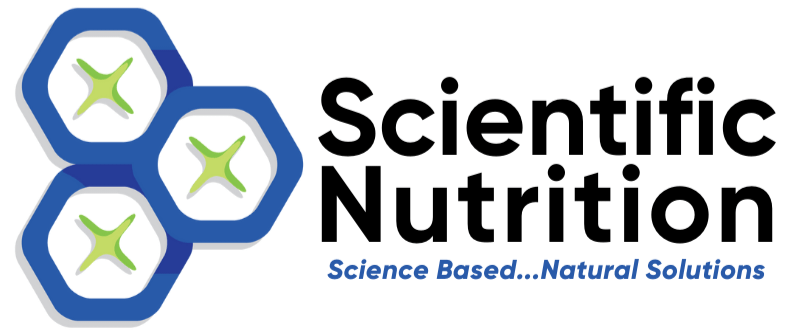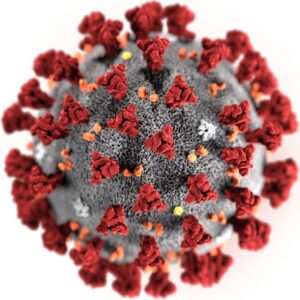What are PFAS chemicals?
PFAS chemicals, short for per- and polyfluoroalkyl substances, have existed since the 1940s. These chemicals were initially developed for their unique ability to resist heat, water, and oil. They quickly found their way into many household products. You’ve likely encountered PFAS in non-stick pans, water-repellent clothing, food wrappers, and firefighting foams.
Though these chemicals make life more convenient, they have a hidden danger. PFAS are often called “forever chemicals” because they don’t break down naturally, lingering in the environment and our bodies for decades. These chemicals are a group of over 4700 fluorinated chemicals.
This persistence has raised alarms about their potential health impacts, as nearly everyone is exposed to them today. These toxins can even be found in the bloodstream of babies and even whales or sea life.
In 1946 DuPont introduced nonstick cookware which has since contaminated 99% of Americans. It was pushed as the best nonstick but when scratched or heated above 400 degrees it leaches into the air. These shifty corporations have suppressed documentation internally for decades to profit off of your dollar and put your health at risk.
Its evil twin PFOS was heavily used in 3M’s Scotchgard to repel liquids or stains and as a waterproof spray for fabrics.
How are we exposed to PFAS chemicals?
Contaminated water
One of the most common ways people have exposure to PFAS chemicals is through contaminated water. These chemicals can seep into the groundwater from industrial sites, landfills, and even military bases where firefighting foams are currently or previously in use. Once in the water supply, PFAS can enter your home through the tap. Drinking or cooking with this water can lead to PFAS buildup in your body over time, posing serious health risks.
Water contamination is affecting more than 110-200 million people!
Cities such as Philadelphia (PA), the Ohio River Valley, and Parkersburg (WV) have been found high in PFAS. The states of New Jersey, California, Colorado, and Michigan, have quietly struggled with contaminated water for decades. The class-action lawsuit in WV against a DuPont company revealed evidence that the business knew the community and their workers were being exposed but failed to stop it. See if your community is safe.
The American Red Cross has stated that “the blood of the average American has 4,300 ppt of PFOS and 1,100 ppt of PFOA”. These chemicals are accumulating daily.
Non-Stick cookware
Non-stick cookware is another everyday source of PFAS exposure. Many non-stick pots and pans have a coating with PFAS to make cooking and cleaning easier. However, these chemicals can break down and leach into your food when heated.
Even worse, the coating can wear off over time, increasing your risk of ingesting these harmful chemicals. Switching to PFAS-free cookware is a safer choice.
Food packaging
PFAS chemicals are often in food packaging, especially items in place to repel grease, such as fast-food wrappers, microwave popcorn bags, and pizza boxes. Even coated bakery goods wrappers can contain PFAS. These chemicals can leach into food, particularly when exposed to heat.
Every time you eat food from this type of packaging, you could unknowingly ingest PFAS, accumulating in your body.
Consumer products
Beyond water and food, you can also experience exposure to PFAS through everyday consumer products. Items like stain-resistant fabrics, water-repellent clothing like the name brand Gore-Tex, carpets, and cosmetics often contain PFAS. Firefighting foams, widely used by military and civilian firefighters, are another major source of environmental PFAS contamination.
Regular contact with these products can increase PFAS levels in your body, contributing to long-term health concerns.
Other source items with PFAS contamination include:
- Personal care products
- Rainwater
- Stain-resistant fabrics or carpets with Scotchgard or Stainmaster
- Living near a fracking facility using chemicals
Health risks associated with exposure to PFAS chemicals
Long-term exposure to PFAS chemicals is risky for health. Here are some of the risks with direct connections to PFAS exposure.
Weight Gain: PFAS exposure may disrupt your body’s metabolic processes, and you gain weight. This can increase the risk of obesity and related health issues.
Suppressed Immune System: Long-term exposure to PFAS has links to a weakened immune system. It makes you more susceptible to infections and illnesses.
Increased Cholesterol: Studies suggest that PFAS can lead to higher cholesterol levels, particularly LDL (bad cholesterol), which increases the risk of heart disease.
Thyroid and Endocrine Hormone Disruption: PFAS chemicals can interfere with thyroid function and hormonal balance, which affects metabolism, energy levels, and overall health.
Liver Damage: Prolonged PFAS exposure may cause liver damage. It robs your liver’s ability to detoxify your body and process nutrients.
Declined Kidney Function: PFAS chemicals have been shown to reduce kidney function over time, potentially leading to chronic kidney disease.
Low Birth Weight for Infants: Pregnant women exposed to PFAS are at risk of giving birth to infants with low birth weights, which can affect the baby’s long-term health.
Reproductive Issues: PFAS exposure has an association with fertility issues in both men and women, including lower sperm quality and menstrual irregularities.
Cancers (Kidney, Liver, Pancreatic, and Testicular): Long-term exposure to these toxic chemicals has links to several types of cancer, including those affecting the kidney, liver, pancreas, and testes, highlighting the serious risks these chemicals pose to human health.
How serious is PFAS contamination?
Since mid-August of 2021, a whopping 2,854 locations in the U.S. have been identified as being contaminated. The bulk of industrial or municipal sites are from the middle of the U.S. to the east, including 41,828 sources of PFOAS, including military sites.
Although PFAS, PFOS (Scotchgard), and PFOA (Teflon) have been phased out after massive pressure was put on the EPA, they are still being imported into products such as food. The EPA is not setting a legal limit for PFAS in your tap water or enforcing safety concerns. The FDA turned its head and allowed it in food packaging products. Even the Pentagon has tried to block federal agencies from setting lower safety standards due to shared profits.
PFAS chemicals list
Here is a list of common PFAS chemicals, their primary sources, and the health effects associated with each:
| PFAS Chemical | Source | Health Effect |
| PFOA (Perfluorooctanoic Acid) | Non-stick cookware, waterproof fabrics, food packaging | Kidney cancer and thyroid dysfunction |
| PFOS (Perfluorooctane Sulfonate) | Firefighting foams, stain-resistant carpets, cleaning products | Liver damage, immune suppression, developmental issues |
| PFHxS (Perfluorohexane Sulfonic Acid) | Water repellents, textiles, firefighting foams | Thyroid hormones and reduced fertility |
| PFNA (Perfluorononanoic Acid) | Food packaging, non-stick cookware, paints | Liver toxicity, developmental effects in children |
| PFBS (Perfluorobutanesulfonic Acid) | Stain-resistant fabrics, cleaning agents | Disrupt thyroid function, leading to metabolic issues |
| GenX (Hexafluoropropylene Oxide Dimer Acid) | Replacement for PFOA in non-stick cookware, industrial processes | Liver damage and risk of certain cancers |
| PFDA (Perfluorodecanoic Acid) | Food packaging, non-stick cookware, waterproof clothing | Liver and kidney damage, potential developmental effects in children |
What health risks does PFAS cause?
The risks of contamination in mass vary but here are a few known results of long-term exposure:
- Weight gain
- Increased cholesterol
- Endocrine hormone disruption
- Declined kidney function
- Low birth weight for infants
- Liver, pancreatic, and testicular cancers
How to avoid PFAS chemicals
Choose safer cookware
To reduce your exposure to PFAS, choose cookware that doesn’t contain these harmful chemicals. Non-stick pans are often coated with PFAS, so opt for safer alternatives like cast iron, stainless steel, or ceramic cookware. These options cook your food well and protect your health by avoiding releasing toxic substances. Safe cookware recommendations can help you to eliminate this daily contamination.
Filter your water
Like the Berkey water filter, a high-quality water filtration system effectively captures PFAS and over 200 other contaminants. Berkey filters are portable, easy to clean, and reliable, ensuring your drinking water is as safe as possible.
Be cautious with food packaging
PFAS can leach into food from certain types of packaging, especially grease-resistant papers and containers. Avoid fast food and processed foods packaged in such packaging to minimize your exposure. Instead, choose fresh, whole foods that don’t require packaging or have safer packaging materials, like glass or paper, without coatings.
Reduce exposure to treated fabrics
Many stain-resistant fabrics, carpets, and upholstery contain PFAS to repel water and stains. These chemicals can slowly leach out and contaminate your environment. Consider switching to untreated fabrics or those with the label “PFAS-free”. Additionally, conducting a product and personal care analysis can help you identify where you may be getting exposure to PFAS daily. Allow yourself to make safer choices and begin detoxification both internally and externally.
Is the EPA changing PFAS safety standards?
To skirt the exposure and make money for these greedy corporations, the EPA has changed some rules. The EPA has recently revised PFAS safety standards, banning chemicals with 8 carbon atoms but allowing those with 6 carbon atoms, known as “short-chain” PFAS. Despite this, DuPont acknowledges that their short-chain chemical, GenX, causes cancerous tumors in lab animals. While a phase-out is in the making by mid-2025, concerns about ongoing exposure remain.
Documents from 1966 show that these chemicals could transfer to food at levels as high as 1 million parts per trillion (ppt). Yet, in 1985, the FDA deemed 10,000 ppt safe. These shifting standards highlight a history of leniency in regulation, often at the public’s expense. The rabbit trail goes on for decades while the public is poisoned slowly.
The current EPA standard is 70 ppt, equating to a drop in 250,000 gallons of water deemed safe to put the toxicity into perspective. This may not protect health, underscoring the need for personal vigilance beyond relying on regulatory bodies like the EPA or FDA.
Is our food supply safe?
Recently, a lawsuit was filed against Simply Tropical “All Natural” for having levels of PFAS hundreds of times over federal limits for drinking water standards.
Remember years back when microwave popcorn was creating “popcorn lung” from the chemicals in the bag reacting with the oils?
In March and April 2022 class action lawsuits were filed against McDonald’s and Burger King for not divulging the dangers of PFAS in their containers.
Can PFAS be removed from water and the body?
These chemicals are some of the toughest that will remain in the environment forever. The good news is that although it may take a few years, our amazing bodies can remove them. It takes proper nutrition, supplementation, and consistent detoxification modalities.
Using a Berkey water filter system can help you capture the toxin along with over 200 other awful contaminants. They are portable and easy to clean. I haven’t found any other system to remove as many items as they do.
Hair Analysis and starting to detoxify from PFAS today
Don’t count on the EPA or FDA to prioritize your health!
PFAS chemicals are persistent, but so is your body’s ability to heal. The more you know about these harmful substances, the better equipped you are to avoid them and protect your health. It’s not just about reducing exposure—it’s about empowering yourself to take action. A Hair Analysis can be the roadmap to show you where to start removing heavy metals and which minerals you need to rebuild.
I also do a product and personal care analysis on 25 of the most used products for my Health For Life clients or as an individual service. This way you can see where you may be getting contamination to eliminate them. The next step is to begin detoxification internally and externally.
A Hair Mineral Analysis can be the roadmap to show you where to begin to remove heavy metals and which minerals you need to rebuild. Once you regain the mineral balance, your body can start to clean, regain your health, and escort the toxins out.
Let’s chat about your health goals!
@Copyright Scientific Nutrition, LLC 2023
Download the Free 17 Health Tips Journal today!
References & Studies
https://www.epa.gov/pfas/our-current-understanding-human-health-and-environmental-risks-pfas




